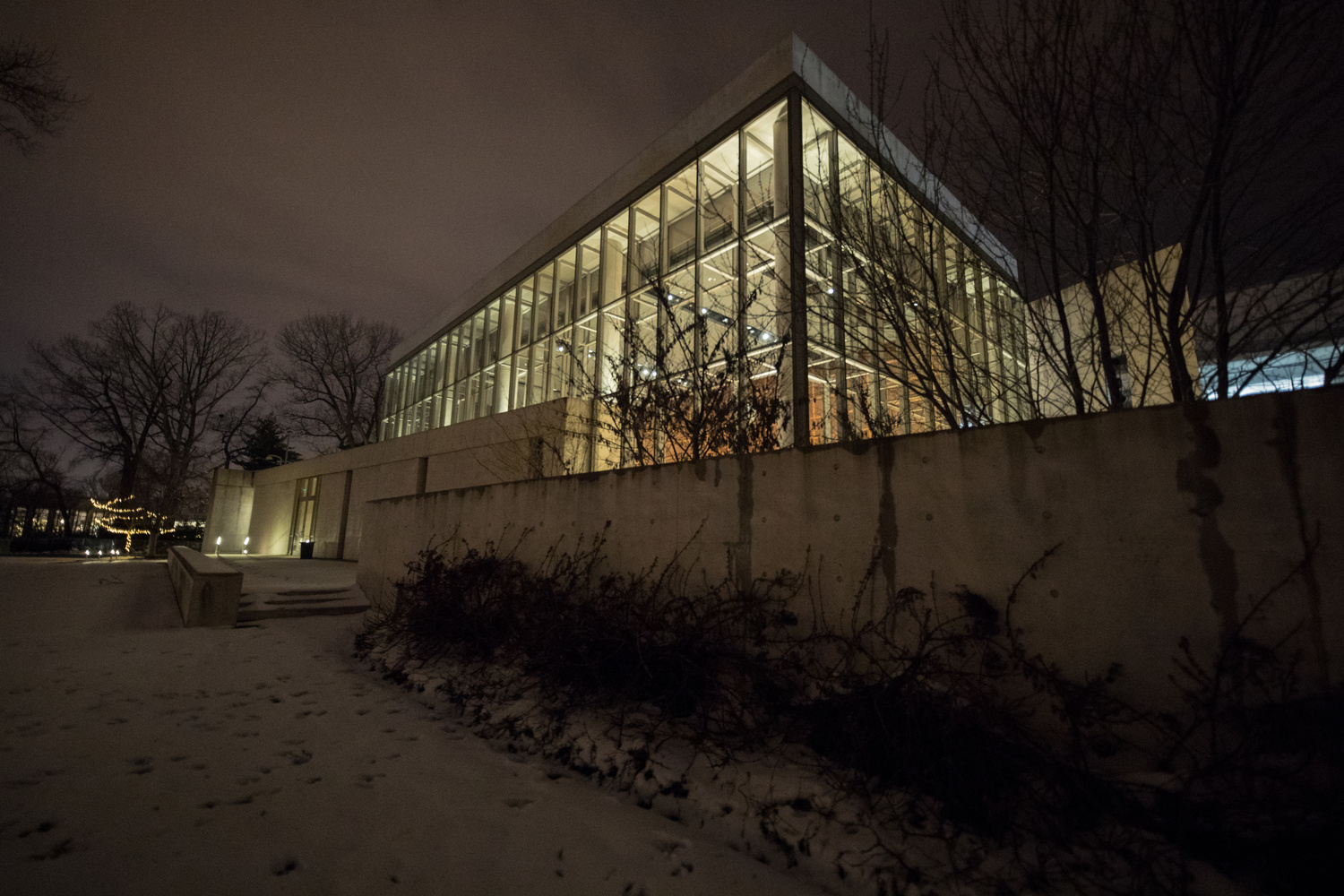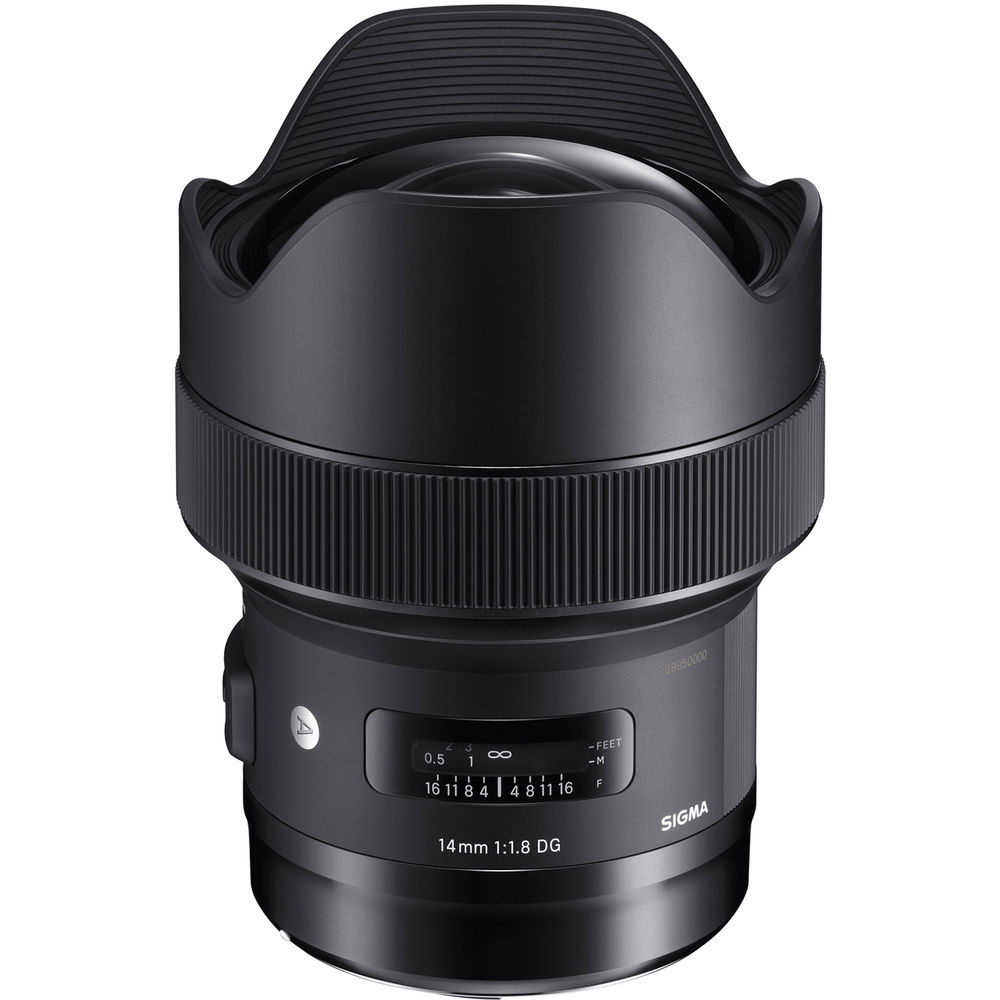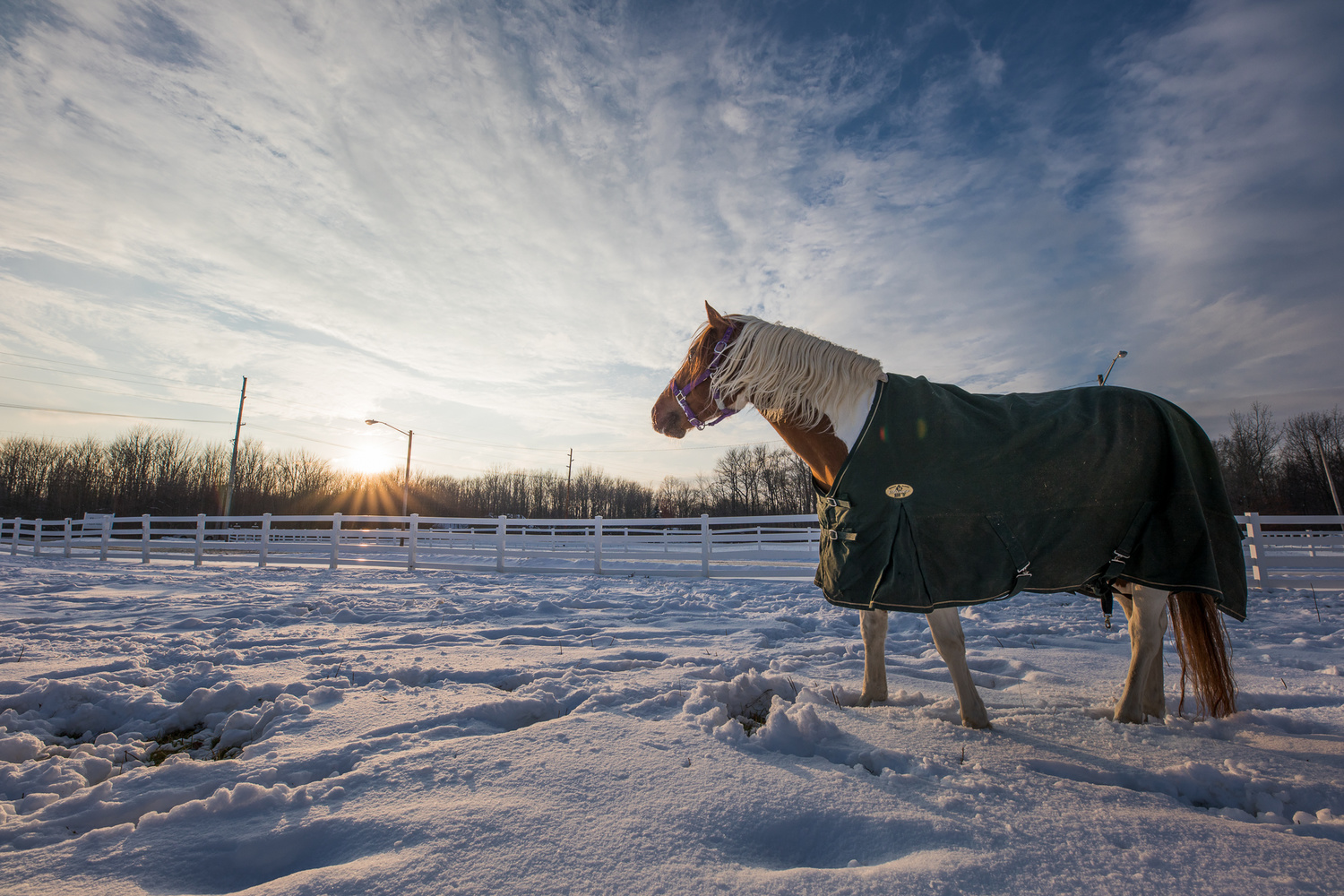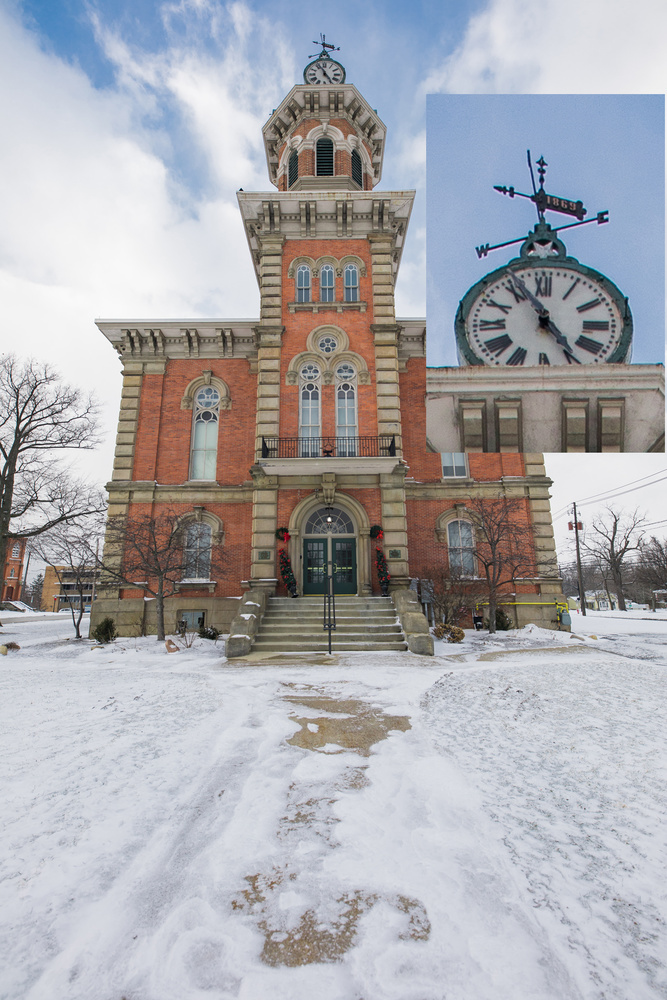Every once in a while, a lens comes along that truly breaks new ground for one reason or another. Such is the Sigma 14mm f/1.8 DG HSM Art, which has an aperture over a stop faster than its competitors and is the fastest full-frame lens under 20mm. Of course, extreme lenses often have compromises of some sort, so how does this one perform? In short, extremely well. Check out our full review.
The Sigma Art series has churned out some awesome lenses that have really shaken up both the lens market and how photographers view third-party lenses in general. Along with some staple lenses have been so more unique offerings, and the 14mm f/1.8 DG HSM Art falls squarely in the second camp, offering an insanely wide aperture for its focal length. This should have astrophotographers and landscape shooters who like to shoot at night drooling, as the increased aperture means lowers ISOs and increased detail, particularly important as there's a time limit on exposures of the night sky before star trails become visible due to the rotation of the Earth (unless one is using an equatorial mount). The lens is also intriguing for event photographers and anyone else who could use a high-quality ultra-wide-angle lens, including architectural photographers, environmental portraitists, and more.
Build Quality and Ergonomics
Build quality is of a typical Art series level. The barrel is made of TSC (thermally stable composite) and feels solid. The focus ring is large and well damped with a good grip, lending itself to precision turns. The lens is weather-sealed, and in my experience, it did perfectly well with some light snow and rain. Like the rest of the Art series, it's a good looking lens with the smooth black finish giving it a modern, elegant look. The distance scale is helpful if you're zone-focusing or looking for the hyperfocal distance, particularly since you'll often find yourself manually focusing in a lot of situations where you'd use this lens.It's a heavy lens, coming in at 2.6 lbs (1,170 g), but that's the price you pay for that crazy aperture. That being said, the lens balances well and isn't front-heavy, so aside from the sheer bulk, it handles well. The hood is non-removable, but with that large, convex front element, I prefer it that way. Also note that because of the front element's shape, screw-on filters cannot be used.
Autofocus
This is far and away the weakest part of the lens. While you may not think you need to worry about autofocus performance too much at this wide a focal length, that maximum aperture does create a noticeably finite depth of field, particularly at closer focal distances (see below). Simply put, it's not great. Focusing speed is quick and accuracy is quite good when it finds it, but consistency is a definite weak point. It does use Sigma's very quiet and fast HSM (Hypersonic motor), which should be pleasing for video shooters. Nonetheless, I found the lens noticeably missing in some rather easy scenarios that shouldn't have challenged it and in which were I working, I would expect it to perform without question. Performance was particularly bad in peripheral autofocus points on my 5D Mark IV, which has a very strong AF system. What's more frustrating is that the problem was mostly one of consistency, which cannot be remedied by an AFMA: in a test where I put the autofocus point on a tree about 10 feet away with a light background (at an exposure of 1/100 s at f/1.8 and ISO 100), the lens would oscillate between nailing the focus and ending up 20 feet behind the tree with no rhyme or reason.
The one piece of good news is that most situations you might find yourself using such a lens in generally allow the time for or even require manual focusing. In fact, astro, landscape, and architectural photographers can all look past this. If you're considering this lens for events work, do keep this in mind, however. There's also calibration via the Sigma USB adapter, but I found the error to be one of low precision, not low accuracy, meaning an AFMA adustment isn't going to help.
Bokeh, Flare, Aberrations, and Distortion
Your first thought might be: "bokeh? What is he talking about?" Yes, it's a 14mm lens, but that maximum aperture does make it possible to throw backgrounds reasonably out of focus if you keep the subject close to the lens and the background far away. The effect diminished quickly with distance, though, so it's best done at or near the minimum focusing distance of the lens. To see what I mean, notice how the tree and lights change with just a few inches of movement (both taken at f/1.8):
1/80, f/1.8, ISO 800
As you can see, the effect diminishes very quickly with just a little more subject distance, but nonetheless, the bokeh that is there is nice: it's smooth and the rounded nine-blade diaphragm makes pleasing renderings of light sources. Some Sigma Art lens are known for having slightly crispy or busy bokeh, but with the 14mm, everything was buttery smooth.
Flare control is about as good as you can ask for. The example below is the worst flare I ever got in my time with the lens; you can see it on the horse's blanket near the neck (it doesn't get much worse even if you open up the aperture). Also note that the 9-blade aperture creates 18-point sun stars.
Vignetting, MFD
Vignetting is quite good considering this is such an extreme aperture for the focal length. It's certainly noticeable, but it doesn't bother me, as I think it frames the subject nicely without being over the top; nonetheless, you can easily clean it up in Lightroom. I'll put it this way: if you stop the lens down to the maximum aperture of all its competitors (f/2.8), the vignetting is comparable or better than them. With a minimum focusing of 10.6", which equates to a maximum magnification of 0.10x, this lens isn't going to win any awards for its macro capabilities (indeed, most ultra-wide-angle lenses sit around 0.15-0.20x), but it's rare if ever you'll find yourself in a situation in which you're using a 14mm lens and wishing for a shorter MFD. It didn't bother me in practice.
Image Quality
Overview
I could blabber on for paragraphs about the specifics of it, but let me sum it up in one word: wow. This lens delivers. Images are sharp, contrasty, and have great bokeh, better than what I've seen out of some other Art lenses.

1/320, f/4, ISO 100 (Like any wide angle, if you don't keep your sensor parallel to the buildings, they'll appear to tilt. This means you often need to choose between that effect or lots of foreground in the shot.)
What You're Really Here For: Quality at f/1.8
What's the fun in buying a crazy aperture lens if the image quality isn't there when you shoot it wide open? The good news is that it's definitely there. Time and again, I was astounded at how sharp the lens is wide open, made even more impressive by the fact that its aperture is so extreme relative to its competitors. This is a game-changer for landscape, events, wedding, and street photographers, as you can now shoot in far lower light levels with high image quality. This means lower ISOs and/or faster shutter speeds, always two good options to have available to you.
1250, f/1.8, ISO 100

The benefit of having great image quality at max aperture is the ability to handhold at lower ISOs (1/60, f/1.8, ISO 3,200)
Sharpness and Contrast
Sharpness improves noticeably when you stop down even a third of stop, continuing to improve to pin-sharp levels. Contrast is quite good as well, typical of an Art series lens.
For an ultra-wide-angle lens with a wide aperture, corner sharpness is very good, becoming excellent as you stop down. Nonetheless, it was good enough wide open that I was never bothered by it, which is more than I can say about some other ultra-wide-angle glass. Combined with the good vignette performance, it creates edge-to-edge image quality that should please most discerning viewers.
Aberrations and Distortion
Chromatic aberration is very well controlled: it never stretches wider than a few pixels if it appears at all and is easily corrected with one click in Lightroom. It's not something I would worry about with this lens. Barrel distortion is present, but I would generally say unless you're shooting brick walls or specifically looking for it, you're unlikely to notice it.
Coma
Considering this lens screams "astrophotography," this is the topic a lot of you are probably waiting to hear about. A wide-aperture, wide-angle lens isn't much use for astrophotography if all the stars have wings on them and aren't rendered as point sources. Simply put, coma is not perfect, but it's very good on the Sigma. Check out the two shots below:
As you can see, stars in the corners do show some coma, but the effect is not extreme and generally limited to the extreme corners. It's not the best performance I've seen, but it's more than good enough to make the lens useable for all but the most discerning astro and landscape photographers. I was quite pleased with the result.
Would I Buy It?
This is a tough question. Seeing as this is a lens I would manually focus all the time (and that I don't particularly trust its autofocus anyway), the question becomes if I'm willing to pay over five times as much over something like the excellent Rokinon 14mm f/2.8 for a modest increase in image quality and the massive increase in aperture. In fairness, the Sigma is actually priced well below the Canon EF 14mm f/2.8L II USM, which maxes out at f/2.8, so that's not to imply it's overpriced. It's more a question of need. If you're an astrophotographer or a landscape photographer doing a lot of nighttime work, I would say that it's absolutely a worthwhile investment that you'll be glad you made. If you're someone like an events photographer, the question is a little trickier, as you'll need to consider the mediocre autofocus performance and how often you need to shoot that wide. For me, I eventually decided that as much fun as this lens is (and let me emphasize that it's one of the funnest lenses I've ever shot with), the percentage of times I need f/1.8 out of an ultra-wide-angle lens versus f/2.8 wasn't enough to justify purchasing it. It's a very personal decision, though, and you may feel differently.
What I Liked
- f/1.8 on a 14mm lens
- The image quality, even wide open, is spectacular
- Good control of coma
- Solid build and ergonomics
- Pleasing bokeh
- Excellent flare and aberration control
- Opens up new creative possibilities
What I Didn't Like
- Autofocus is below par
Purchase
You can purchase the Sigma 14mm f/1.8 DG HSM Art here.






















Serious review. Thanks Alex. I'm very interested by this lens for Astro work.
I own one...it's the least used lens in my case for some reason...
It’s pretty specialized but I’d love it for star shots.
very nice review! The Art lenses are the one reason why sometimes i'd like to go back to Canon.... i hope one day they start producing for Fuji!
Great review, I'm dying for this lens!
This lens is a brick. I experienced it shifting with the mc11 on a cage rail system and returned it. After testing the Batis 18, the Loxia 21 and the Tokina 20mm for nightscapes I ended up picking the Sigma when they put the rebates back on in January. Glad I persevered and came up with a fix for the shifting issue.
Do tell how did you fix the shifting issue (and I assume you meant focus shifting).
I'm very interested in this lens and the coma control is amazingly well done for such a wide FOV and extreme aperture. From what I've seen in many reviews, it's even less noticeable stopped down. So you get the sharpness, better coma and vignette control at same f-stop as competitors and still have option to go wide-open if needed. That seems like a good option to me.
I will never trust Sigma with their AF issues though, I own the 35m ART and have used couple other ART lenses and all of them had unreliable AF. I cannot use my 35mm in event photography because of that, it's only used in studio environment where I have time to confirm the focus. It's sad to see 14mm also suffers from unreliable focus, maybe even worse than my 35mm from what I read in this review.
Shifting with lens support as in moving in the cage when handling from/ in bag to tripod. Tape on cage plate.
I own the 35 Art and can definitely say the 14mm is far worse in terms of AF performance. The 35mm is so-so, but 14mm is flat-out bad. If you can get past that or don't need it, though, it's one heck of a lens in terms of image quality.
Spot on review Alex-agree 100% regarding the crappy AF and great image quality.
Thank you for your review Alex. Sigma's AF problem is quite annoying, and I have found a solution for it: turn off AFMJ and use the lens dock to do all the work. Because, for some reason, the Micro Adjustment Value does not apply sometimes. This works on my 50mm Art and 85mm so far.
Can you explain what "AFMJ" is short for?
Auto Focus Micro Adjustment, I mistyped.
“Autofocus is below par”... on Canon, maybe. Have you tested it on Nikon? It’s fairly well known that Sigma lenses’ AF performance isn’t that great on Canon. They work well on Nikon however.
Nice review Alex!!! You probably don't shoot live music in small venues and that is where I think a lens like this would rock!!!!
Great review. I recently got this lens and I’ve not experienced the focus issues yet. If you shoot Astro you will love it.
Only into the second paragraph and we find some questionable grammar - quote: "Along with some staple lenses have been so more unique offerings, and the 14mm f/1.8 DG HSM Art falls..."
Does this stuff ever get proof read?
Yes, things get proofread. It’s perfectly fine to leave out that adverb when it’s in an internal position. Thanks for reading!
Interesting and informative review, the only omission is that it is not compared against the new Samyang 14mm 2.8 AF, which would have given a different price point and is the more direct lense comparison I would have thought. Besides this excellent.
Based on my own reviewing, while the Sigma is indeed impressive and has made a considerable leap forward WRT coma verus the downright /terrible/ 20mm and 24mm, ...I have to say that for astro work, the new champion at 14mm is the Rokinon 14mm f/2.4 SP. It's only f/2.4, but the image quality is insane, the vignetting is not bad, and the extreme corners are almost FLAWLESS with low coma and incredible sharpness, great focus throw for nailing stars compared to the Sigma, (or any AF lens for that matter) and plus it's a bit lighter and more affordable.
It’s two years plus later and I read through the reviews. I shoot live music in small dim lit bad stage lighting to events and festivals. I shoot live music videos and make shows for tv . A lens like this is so so valuable for what I do . I have a couple wide angle and ultra wide lenses. Their autofocus misses more than it hits sometimes . I shoot Nikon and do know the 14-24 f/2.8 Nikon (that I didn’t get) is way better at nailing the shot . It’s the f/1.8 that makes this lens above and beyond anything else .
My main question is ; in two years has Sigma improved the autofocus on DSLRs of course. I could really use a len like this even though I will eventually move to the mirrorless system.